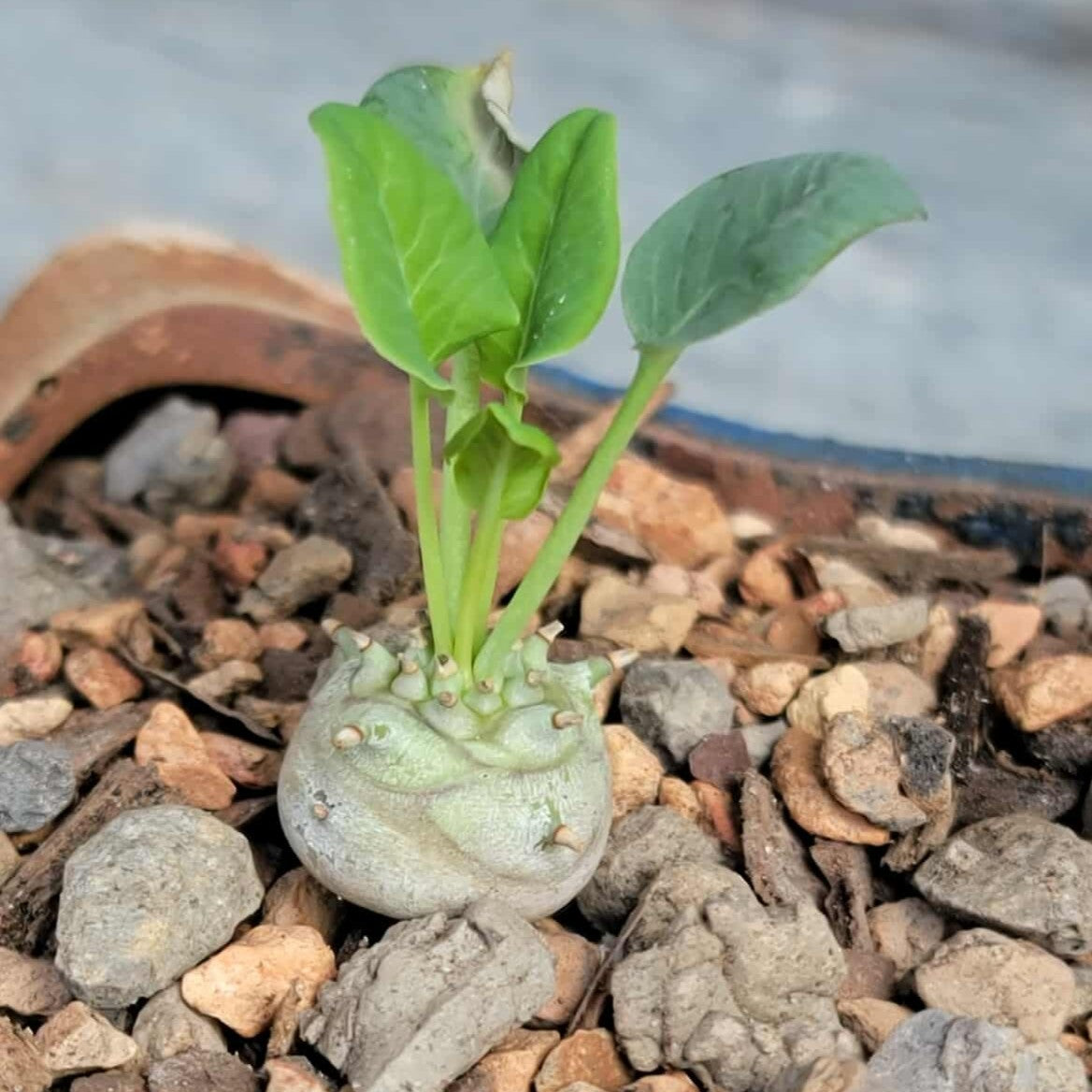Shangri-Ha Cactus Ranch
Euphorbia globulicaulis - Very Rare
Euphorbia globulicaulis - Very Rare
Couldn't load pickup availability
Euphorbia globulicaulis – Very Rare
You will receive the exact specimen shown here.
Measures 1.25" tall.
Showcased here in terra cotta pottery (sold separately).
Roots as shown.
Will be shipped bare root.
Euphorbia globulicaulis, a rare caudiciform succulent from Somalia, is considered one of the smallest of all succulent euphorbias. The name is derived from the Latin words for "globule" and "stem," referring to its small, rounded base. Due to its sensitive nature and specific care requirements, it is a plant prized by caudiciform enthusiasts.
Key Characteristics:
- Native range: This plant is native to the Nugaal region of Somalia, where it grows on limestone slopes with rocky, stony soil and low scrub.
- Size: In its natural habitat, the fleshy, sub-globose (nearly spherical) stem is mostly underground, with a diameter of less than 3 cm.
- Appearance: Above ground, the plant produces a small rosette of oval-shaped leaves with wavy margins. It is most visible after rainfall when the stem swells. In cultivation, the caudex is often exposed to showcase its unique form.
- Flowering: The plant produces small, inconspicuous, pinkish flowers (cyathia). In its native habitat, it blooms around October and November.
- Life cycle: E. globulicaulis is a short-lived perennial, often lasting only 2–4 years in cultivation.
Care and Cultivation:
- Sunlight: Provide maximum sun exposure, which helps the plant maintain a compact growth habit. It can tolerate some light shade.
- Soil: Use a very airy potting medium with excellent drainage. A mix of pumice, lava grit, and a small amount of peat or leaf mold is recommended. A generous drainage hole is essential.
- Watering: During the summer growing season, water regularly, allowing the soil to dry out between waterings. In the winter, keep the soil almost completely dry, as overwatering when the plant is dormant can cause it to rot immediately.
- Fertilizer: During the summer, a high-potassium fertilizer for cacti and succulents can be used.
- Temperature: The plant is tender and is best suited for warmer climates (USDA Zones 10–11). It needs to be kept warm during its growing season and slightly cooler and dry in the winter.
- Pests: This species is susceptible to the same pests as other euphorbias, including mealybugs, aphids, and spider mites. Its sensitive nature makes it vulnerable to root rot from overwatering.
Propagation & Toxicity:
- Propagation: Propagation of E. globulicaulis is difficult and is done almost exclusively by seed.
- Toxicity: Like other euphorbias, this plant produces a milky latex sap that is poisonous.
- Skin contact: The sap can cause skin irritation, rashes, and discomfort.
- Eye contact: If the sap gets into the eyes, it can cause severe pain and temporary blindness and requires immediate medical attention.
- Ingestion: The plant is toxic if ingested by humans or pets.
- Handling: Always use caution and wear protective gloves and eyewear when handling or pruning the plant.




















